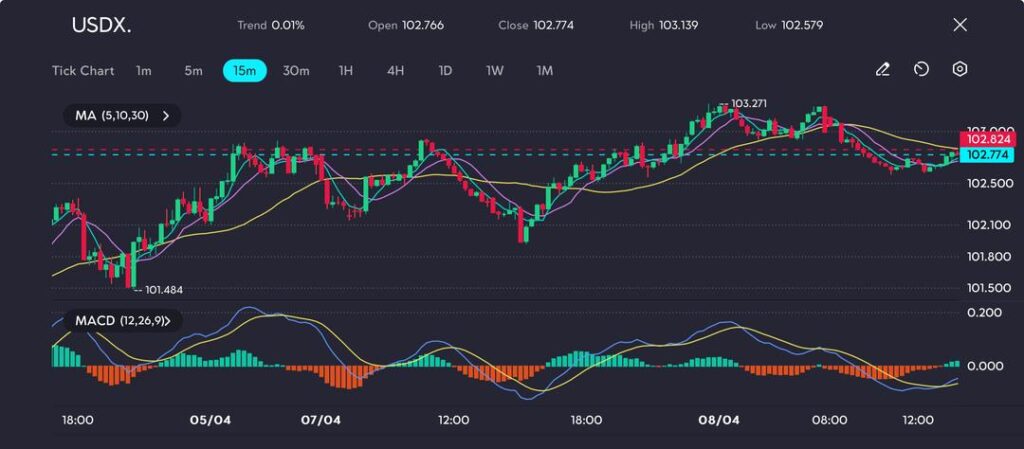
Key Points
- Dollar Index (USDX) down 0.44% on Tuesday, erasing over 1% since tariffs were announced.
- Yen holds near six-month high; Swiss franc and euro gain as safe-haven flows deepen.
The US dollar slipped against most major currencies on Tuesday, weighed down by mounting concerns that escalating trade tensions could tip the global economy into recession.
With market volatility surging and risk appetite evaporating, traditional safe-haven currencies—the Japanese yen and Swiss franc—traded near six-month highs, while the Dollar Index (USDX) fell 0.44%, extending losses to over 1% since President Donald Trump’s sweeping tariffs were announced last week.
USD/JPY retreated to 147.325, inching closer to the Friday low of 144.82, while USD/CHF settled near 0.85665, barely above its recent multi-month trough. Despite the dollar’s usual safe-haven appeal, the currency is losing ground as traders weigh the rising likelihood of a domestic downturn driven by retaliatory trade measures from China and the EU, which could pressure corporate earnings, growth, and eventually, monetary policy.
Technical Analysis
On the technical front, the Dollar Index (USDX) touched a session high of 103.139 before drifting lower to close at 102.774. The MACD indicator shows a bearish crossover, while the short-term moving averages (5, 10, 30) remain tightly packed, reflecting a fragile trend environment. Support lies at 102.50, with a break below likely to invite further weakness toward 101.80, last tested on 5 April.

Picture: Rangebound with bullish bias—eyes on 103.27 resistance, as seen on the VT Markets app
The trend has flattened, and while the USDX remains above the February floor of 101.484, it is under pressure from growing expectations of Federal Reserve rate cuts. The market is now pricing in a possible rate cut as early as May, which would weaken the dollar’s yield advantage over peers like the euro and sterling.
Market Sentiment at a Crossroads
Fed officials remain cautious. Chicago Fed President Austan Goolsbee urged restraint, citing the need for “hard data” before adjusting policy, while Charles Schwab’s Kevin Gordon argued that rate cuts may not offer a solution, especially with inflation still sticky and fiscal stimulus absent. Meanwhile, analysts expect New Zealand’s central bank to cut rates at its next policy meeting, underscoring the widening divergence among global monetary authorities.
The dollar’s unusual weakness, even amid risk aversion, suggests markets are repricing the greenback’s safe-haven status. As the political response to tariffs remains hardline and economic data turns, the path of least resistance for the dollar appears downward—at least in the near term.









